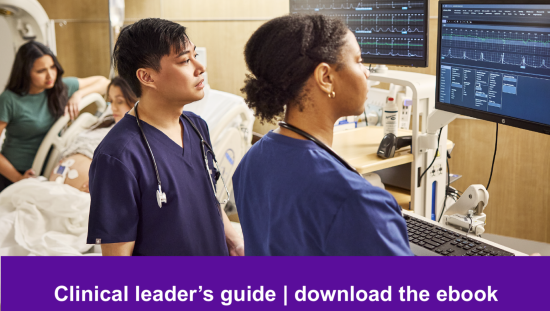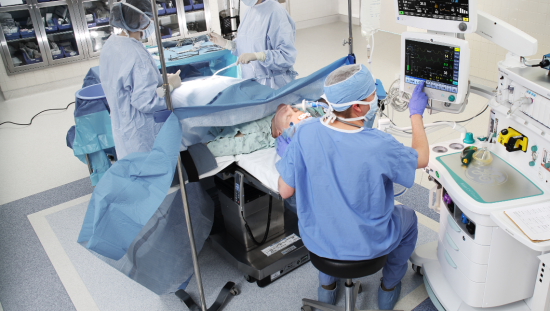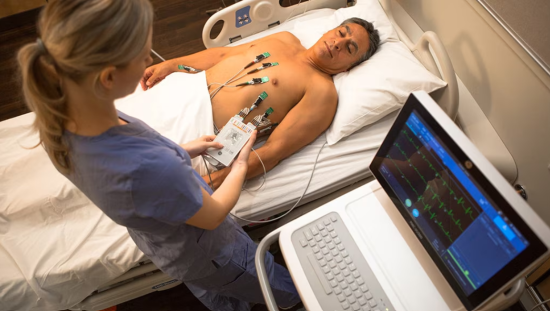Introduction
The work clinical engineers do behind the scenes ensures care teams have the devices they need to provide optimized patient care. However, as clinical engineers face an influx of increasingly complex and connected devices, it is growing more difficult to keep pace with device management and maintenance needs. Remote fleet management technology is helping many clinical engineers to address this challenge. In this report, we take a closer look at these technology advancements and the benefits they provide to clinical engineers, as well as other stakeholders such as clinical care teams and hospital leaders.
Remote fleet management: the what, why and how
What is remote fleet management? Remote fleet management encompasses a broad umbrella of technology solutions and capabilities that enable more oversight, visibility and control of medical devices regardless of their location.
Why are more hospitals implementing this technology? Benefits of remote fleet management solutions include more efficient device management and maintenance, enhanced deployment of patches to address cybersecurity risks for connected devices, reduced alert fatigue, better informed capital expenditure planning, and more.
How does it work? Remote fleet management capabilities support the lifecycle management of biomedical devices. Key features to look for include the ability to support remote software updates and device configurations as well as remote access to log files and usage metrics.
Remote fleet management benefits for clinical engineers
Remote fleet management technology can help solve some of the most pressing challenges clinical engineers are experiencing, including managing and maintaining a growing number of devices while facing staff and resource constraints.
“Many clinical engineers are facing an increase in our responsibilities, but our resources have not changed to accommodate that increase,” Mark Huy, a GE HealthCare Clinical Engineer explains.
Remote fleet management can help ease the burden by enabling clinical engineers to complete device management tasks more efficiently and more effectively.
With remote fleet management technology, clinical engineers can:
- View real-time device data for diagnoses, repairs and other insights
- Schedule and push updates, upgrades and security patches
- Manage, track and deploy device configurations within specific care areas
- Receive automated notifications of technical alarms
A recent survey of clinical engineers found that 56% of respondents characterized their workload as “heavy” or “excessive.” Only 41% described it as “moderate” and just 3% called it “light.”1
Less equipment downtime and more secure devices
“Clinical engineers no longer have to wait for a call from another team member or for regularly scheduled maintenance to find out about a problem,” says David Christenson, Engineering Director at GE HealthCare. “They can identify problems earlier and fix them more quickly.”
The ability to manage device configurations remotely, based on guidance from clinical leaders, is another key efficiency enabler. “It’s a huge time savings because they no longer need to configure each device, on-site, one-by-one,” notes Christenson. “It also means the preferences and needs of each care area can be addressed rapidly with less disruption.”
Huy agrees, adding that the additional visibility into device security needs is particularly beneficial to clinical engineers. “It’s critical to be able to identify and address device vulnerabilities quickly,” he says. The need for visibility into vulnerabilities will only grow as cyber criminals increasingly target connected devices. A 2023 article in Fierce Healthcare noted that while phishing has historically been an initial point of access for most cyber attackers, the primary point of entry is now shifting to software vulnerabilities and connected devices.2
Top benefits for clinical engineers
- More efficient processes
- More proactive troubleshooting and maintenance
- Ability to standardize clinical and alarm configurations within a care area
Remote fleet management benefits for clinical care teams
It’s no secret that clinical care teams are wrestling with burnout, workforce shortages, and alert fatigue. One recent survey shows that 56% of nurses are experiencing burnout and 64% are experiencing “a great deal of stress because of their job.”3
As hospital and clinical leaders search for opportunities to reduce burnout and increase satisfaction among nurses and other clinical team members, adopting the latest in remote fleet management technology should be a top consideration.
Remote fleet management technology benefits nurses and clinical team members by experiencing:
- Less alarm fatigue due to more relevant configurations for their care area. Remote fleet management enables standardized clinical and alarm configurations within a care area based on input from clinical leaders.
- More time to focus on patients. With more relevant device configurations the clinical team can spend less time focusing on updating settings.
- Reduced frustration due to device problems and errors. This new technology enables clinical engineers to engage in more proactive and effective device management and maintenance, resulting in the care team experiencing fewer interruptions for maintenance or technical alarms.
- Adherence to clinical standards. With remote fleet management, clinical engineers can configure devices for specific care areas remotely. This allows them to monitor how these configurations are used by the clinical team. As a result, clinical leaders can use this information to identify gaps and find opportunities for optimization.
“When we think about technology and patient care, it’s critical to consider how it is going to impact clinicians,” says Traci Bartolomei, RN, Global Clinical Development Manager at GE HealthCare. “Devices that are enabled with remote fleet management capabilities can help reduce distractions so nurses can focus on what matters most, their patients.”
Bartolomei, who served in various hospital nursing roles for more than 20 years, adds that during a single shift, a nurse might interact with 10 different devices with different user experiences, configurations, and alarm settings. “Having the ability to streamline things with remote fleet management makes their work a lot easier,” she says.
Heidi Dondlinger, Portfolio Director at GE HealthCare, notes the settings required for a device in the emergency department might be very different than for that same device in the ICU. “When devices are automatically configured to the settings most relevant for that area or patient population, clinicians can focus more on patient care with fewer distractions.”
Top benefits for clinicians
- Fewer care disruptions
- Less alarm fatigue
- More focus on patients
Remote fleet management benefits for hospital leaders
Hospital leaders are confronting a host of challenges, including clinical workforce shortages, growing administrative burdens, declining reimbursements, and escalating cybersecurity threats.4 While these challenges are extremely complex to navigate, recent advances in remote fleet management technology can help.
“At a time when staff satisfaction, burnout, and shortages are top of mind for hospital leaders, remote fleet management can support improvements across all of these areas,” says Christenson. “It can also enhance efficiencies and reveal opportunities to reduce waste.”
By utilizing remote fleet management, hospital leaders can experience:
- Improved quality of care and more adherence to standards across departments, hospitals, and health systems, as well as increased clinician and patient satisfaction.
- Enhanced workflow efficiencies for clinical engineers and clinical care teams, improved asset utilization, improved device integration and connectivity.
- Optimized staffing resources due to the ability for clinical engineers and IT teams to focus on more value-added activities.
- Enhanced operational efficiencies and more informed capital expenditure planning.
- Reduced cybersecurity risks due to more proactive and more efficient upgrades and patches for connected devices.
- More ease in managing multiple-sites, or in transitioning recently acquired sites, due to the ability to remotely deploy device configurations.
“Insights related to asset utilization, uptime, and standardization can be a huge benefit when it comes to capital planning and identifying opportunities to move and shift equipment across departments,” says Dondlinger. “Data from devices and usage of fleet tools can also provide insights on alarm protocols, bed capacity, and more.”
Top benefits for hospital leaders
- Enhanced efficiencies
- Higher clinician satisfaction
- More informed capital expenditure planning
Ready to experience the benefits of remote fleet management?
GE HealthCare is continually innovating to advance remote fleet management capabilities through our DeviceReadyTM portfolio. Current solutions include asset management, network monitoring, and real-time location tracking solutions that enhance visibility into devices and support more proactive and efficient device management and maintenance.
As remote fleet management technology continues to evolve, hospitals and health systems should seek out a partner who is leading the charge. Finding a solution that enables bi-directional communication—meaning that biomedical devices can both send and receive information from fleet management solutions in real-time—should be a top priority. This bi-directional exchange will provide clinical engineers with more visibility into biomedical device status and enable them to remotely apply updates and fixes as needed.
Contact us
To learn more about how we’re staying at the forefront of innovation—and how we can help your hospital or health system experience the benefits.
Sources
- “HTM Salary Survey 2023,” 24x7 Magazine, last modified January 25, 2025
- Dave Muoio, “2024 Outlook: The cybersecurity trends health system leaders need to know,” Fierce Healthcare, last modified December 21, 2023
- “Mental Health and Wellness Survey 4 results,” American Nurses Foundation
- “Executive Summary: Hospitals and Health Systems Continue to Face Escalating Operational Costs and Economic Pressures as They Care for Patients and Communities,” American Hospital Association, last modified April 2024
©2025 GE HealthCare
GE is a trademark of General Electric Company used under trademark license. Reproduction in any form is forbidden without prior written permission from GE HealthCare. Nothing in this material should be used to diagnose or treat any disease or condition. Readers must consult a healthcare professional.
JB31969XX








